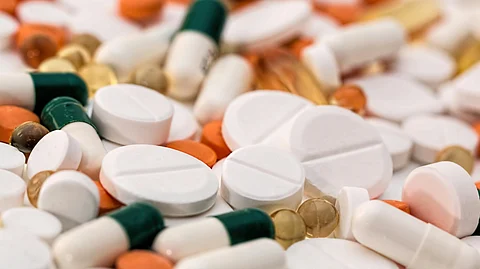

Antimicrobial resistance (AMR) has emerged as a formidable global health threat, undoing years of progress in medicine. The rise of "superbugs," which are resistant to common antibiotics, has turned treatable infections into potential killers. Projections by the World Health Organization (WHO) suggest that AMR could lead to 10 million deaths annually by 2050, eclipsing cancer as a leading cause of mortality. At present, over 700,000 lives are lost each year due to AMR. Every year, World AMR Awareness Week (WAAW) is served from 18-24 November. This year, World AMR Awareness Week (WAAW) emphasizes the pressing need to combat antimicrobial resistance under the banner of “Educate. Advocate. Act now.”
This resistance is largely fueled by excessive and inappropriate usage of these drugs.
Research published in The Lancet reveals that nearly half of all antibiotic prescriptions are unnecessary, further compounding the problem.
Additionally, the overuse of antibiotics in agriculture, particularly to promote livestock growth, has accelerated the spread of resistance.
The implications of AMR are dire. Without effective antimicrobials, standard medical procedures like surgeries, chemotherapy, and childbirth could become exceedingly risky. Moreover, infections such as tuberculosis and gonorrhea are becoming increasingly difficult to treat due to resistance.
The focus of this year’s WAAW aligns with the adoption of the 2024 Political Declaration on AMR at the United Nations General Assembly and the 4th Global High-Level Ministerial Conference in Jeddah. A critical goal is for at least 60% of countries to implement comprehensive, well-funded national strategies to combat AMR by 2030.
The WHO Regional Office for South-East Asia (SEARO) has actively contributed to these global efforts, addressing factors that exacerbate AMR in the region, such as dense populations, limited healthcare infrastructure, and widespread misuse of antibiotics. During the 79th UNGA, SEARO joined forces with organizations like the Pan American Health Organization (PAHO) and the United Nations Foundation to foster an equitable global response to AMR. Earlier in 2024, SEARO collaborated with Japan and the Western Pacific Regional Office to publish a joint position paper on combating AMR across the Asia-Pacific region.
Dr. Saima Wazed, WHO’s Regional Director for South-East Asia, emphasized that the steps taken today to curb AMR will shape the health outcomes of future generations. She stressed the importance of moving from global commitments to measurable progress and urged countries to work together to maintain the efficacy of antimicrobial drugs.
The South-East Asia region faces unique challenges in managing AMR due to its dense populations and uneven healthcare access.
According to the Journal of Global Antimicrobial Resistance, self-medication with antibiotics is prevalent in many low- and middle-income countries, with as many as 30–40% of individuals using antibiotics without a prescription.
To combat this, SEARO has initiated programs to promote judicious use of antibiotics and strengthen surveillance systems. Their recent joint position paper with Japan and the Western Pacific Regional Office emphasizes regional collaboration to tackle AMR.
A study in Nature Microbiology estimated that by 2050, the economic toll of AMR could reach a staggering $100 trillion. Resistant infections lead to longer hospital stays and higher treatment costs, placing immense strain on global healthcare systems.
WHO has flagged several dangerous resistant pathogens, including carbapenem-resistant Enterobacteriaceae and drug-resistant Klebsiella pneumoniae, which pose significant risks in healthcare environments.
Despite the gravity of AMR, scientific advancements are paving the way for potential solutions. One promising area is bacteriophage therapy, which uses viruses to target and destroy bacteria. A recent study in Clinical Infectious Diseases demonstrated the successful use of bacteriophages to treat resistant infections in animal models.
Rapid diagnostic tools are also revolutionizing the fight against AMR. These devices enable healthcare providers to pinpoint the cause of infections within hours, potentially cutting down on unnecessary antibiotic use by 40%, as reported in The Journal of Antimicrobial Chemotherapy. Additionally, antimicrobial stewardship programs in hospitals have shown significant success, reducing inappropriate antibiotic use by up to 30%.
Raising public awareness about AMR is essential. Many people still believe antibiotics can cure viral infections like the flu or common cold, leading to their misuse. WHO campaigns have focused on educating communities about the importance of completing antibiotic courses and avoiding self-medication.
References
World Health Organization (WHO). (2024). World AMR Awareness Week 2024.
The Lancet. (2024). Global Antibiotic Use and Misuse. The Lancet Infectious Diseases
Journal of Global Antimicrobial Resistance. (2023). Antibiotic Self-medication in Low- and Middle-Income Countries.
Nature Microbiology. (2023). The Economic Impact of Antimicrobial Resistance. Nature
Clinical Infectious Diseases. (2024). Bacteriophage Therapy for Resistant Infections. Clinical Infectious Diseases
The Journal of Antimicrobial Chemotherapy. (2024). Rapid Diagnostic Tools in AMR Control
(Input from various sources)
(Rehash/Dr. Sreelekshmi P/MSM)
